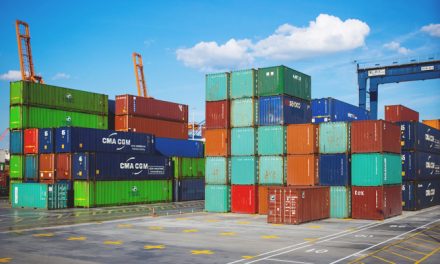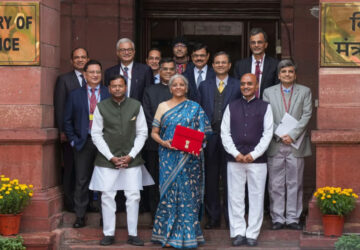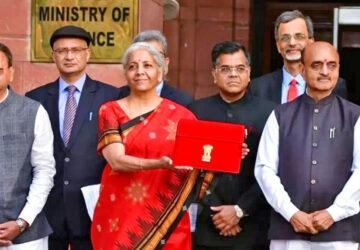 India’s Finance Minister Nirmala Sitharaman recently rejected the proposal put forward by the Ministry of Textiles to defer the increase in Goods and Services Tax (GST) from the current 5 percent to 12 percent on fabrics and other textile products. As a result, GST rates will go up as scheduled with effect from January 1, 2022, from 5 percent to 12 percent on all types of fabrics, and on garments with retail value below Rs. 1,000. The GST rate on man-made fibre, however, will come down from 18 percent to 12 percent. The rates on cotton, cotton yarn and synthetic yarn will remain unchanged at 5 percent, 5 percent, and 12 percent respectively.
India’s Finance Minister Nirmala Sitharaman recently rejected the proposal put forward by the Ministry of Textiles to defer the increase in Goods and Services Tax (GST) from the current 5 percent to 12 percent on fabrics and other textile products. As a result, GST rates will go up as scheduled with effect from January 1, 2022, from 5 percent to 12 percent on all types of fabrics, and on garments with retail value below Rs. 1,000. The GST rate on man-made fibre, however, will come down from 18 percent to 12 percent. The rates on cotton, cotton yarn and synthetic yarn will remain unchanged at 5 percent, 5 percent, and 12 percent respectively.
The GST Council decided to change the GST rate to address the inverted tax structure in the MMF textile value chain. The GST of 18 percent, 12 percent and 5 percent levied on MMF, MMF yarn and MMF fabrics created build-up of credits and cascading costs, as the tax on inputs was at higher rates than finished products. This further led to accumulation of taxes at various stages of MMF value chain and blockage of crucial working capital for the industry. Though there is a provision in the GST law to claim unutilised Input Tax Credit as a refund, there were other complications and it resulted in more compliance burden.
On the decision to uniformly tax all garments at 12 percent, the Ministry said that differential rates for garments create problems in compliance of tax regime. Garments made of MMF cannot be identified easily and cannot be taxed differently, hence there is a need for uniform rate. Uniform rate makes it simple and since there is so much high potential of value addition in garment segment, the increase in rate is likely to be absorbed in value addition. It will provide clarity to the industry and settle, once and for all, the issues caused by inverted tax structure.
Industry experts does feel that the uniform rate will lead to smaller players being pushed into the unorganised sector, as it will make harder for the sector to keep afloat. This change will adversely affect the business of retailers and wholesalers who are already passing through a bad phase due to subsequent two waves of Covid-19.
On the other hand, Apparel exports from India have registered strong growth in the last three months, according to the latest data by the Apparel Export Promotion Council. Exports in September, October and November 2021 increased by 20.3 percent, 13.0 percent and 1.3 percent respectively, over the same months in 2019.The exports picked up quickly due to strong recovery in demand in major economies and robust supply fundamentals of the
Indian industry.
With economic and movement restrictions much reduced globally, the growth momentum in India’s apparel exports is likely to continue. However, some of that momentum may be hindered if restrictions are reimposed due to the spread of the new omicron variant of COVID-19.
At this occasion I would also like to wish all our readers a very Happy and Prosperous New Year 2022!
 India’s Finance Minister Nirmala Sitharaman recently rejected the proposal put forward by the Ministry of Textiles to defer the increase in Goods and Services Tax (GST) from the current 5 percent to 12 percent on fabrics and other textile products. As a result, GST rates will go up as scheduled with effect from January 1, 2022, from 5 percent to 12 percent on all types of fabrics, and on garments with retail value below Rs. 1,000. The GST rate on man-made fibre, however, will come down from 18 percent to 12 percent. The rates on cotton, cotton yarn and synthetic yarn will remain unchanged at 5 percent, 5 percent, and 12 percent respectively.
India’s Finance Minister Nirmala Sitharaman recently rejected the proposal put forward by the Ministry of Textiles to defer the increase in Goods and Services Tax (GST) from the current 5 percent to 12 percent on fabrics and other textile products. As a result, GST rates will go up as scheduled with effect from January 1, 2022, from 5 percent to 12 percent on all types of fabrics, and on garments with retail value below Rs. 1,000. The GST rate on man-made fibre, however, will come down from 18 percent to 12 percent. The rates on cotton, cotton yarn and synthetic yarn will remain unchanged at 5 percent, 5 percent, and 12 percent respectively.












